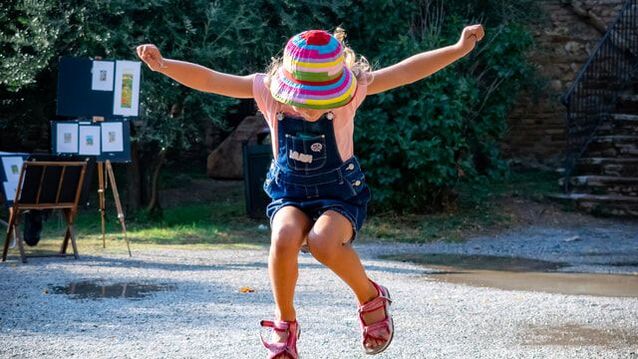Are Your Students Getting Enough Vitamin K(inesthetic)?As anyone who has used the ISJL Education curriculum knows, we always include Visual, Auditory, and Kinesthetic learning components in each of our lessons. We work hard to fit one of these categories into every plan.
Kinesthetic is often the hardest, because we don’t want kids to be moving just for movement’s sake; kinesthetic learning components have been proven to help forge pathways in the brain and retain information. Whereas some learners may be able to just hear some information and remember it, interacting with that information in a physical way can make it more than just knowledge to be recalled. Companies like Pixar have devoted entire learning groups to topics unrelated to the job itself (making movies, that is) to help their staff think more creatively and productively. Who would have thought that learning yoga or knitting would help someone create loveable cartoon characters? Perhaps we can apply this concept of getting our kids moving and learning in different ways to our classrooms, as well. Therefore, we thought it would be helpful to analyze the entire concept of kinesthetic learning to put it on our brains. Hopefully, you will have your kids jumping to meet you and immerse themselves in our tradition after you learn about:
Happy reading (and moving)! |
The ISJL Education TeamWe're proud to provide our partners with new monthly resources and enrichment to share with your classrooms and communities! If you have newsletter questions or requests, email Education Director Rabbi Matt Dreffin: [email protected]. Archives
May 2020
Categories |
- Home
- WHO WE ARE
-
WHAT WE DO
- PODCAST
- Conference >
- Education >
-
CULTURE
>
- Culture Overview
- Cultural Programming >
-
History
>
-
Encyclopedia of Southern Jewish Communities
>
- Alabama Encyclopedia
- Arkansas Encyclopedia
- Georgia Encyclopedia
- Florida Encyclopedia
- Kentucky Encyclopedia
- Louisiana Encyclopedia
- Mississippi Encyclopedia
- North Carolina Encyclopedia
- Oklahoma Encyclopedia
- South Carolina Encyclopedia
- Tennessee Encyclopedia
- Texas Encyclopedia
- Virginia Encyclopedia
- Encyclopedia Credits
- Oral History
-
Encyclopedia of Southern Jewish Communities
>
- SPIRITUALITY >
- DONATE
- Shalom Y'all
- Strategic Plan
- Southern & Jewish Blog
- Calendar
- Virtual Press Kit
|
©2024 Goldring/Woldenberg Institute of Southern Jewish Life
|


 RSS Feed
RSS Feed